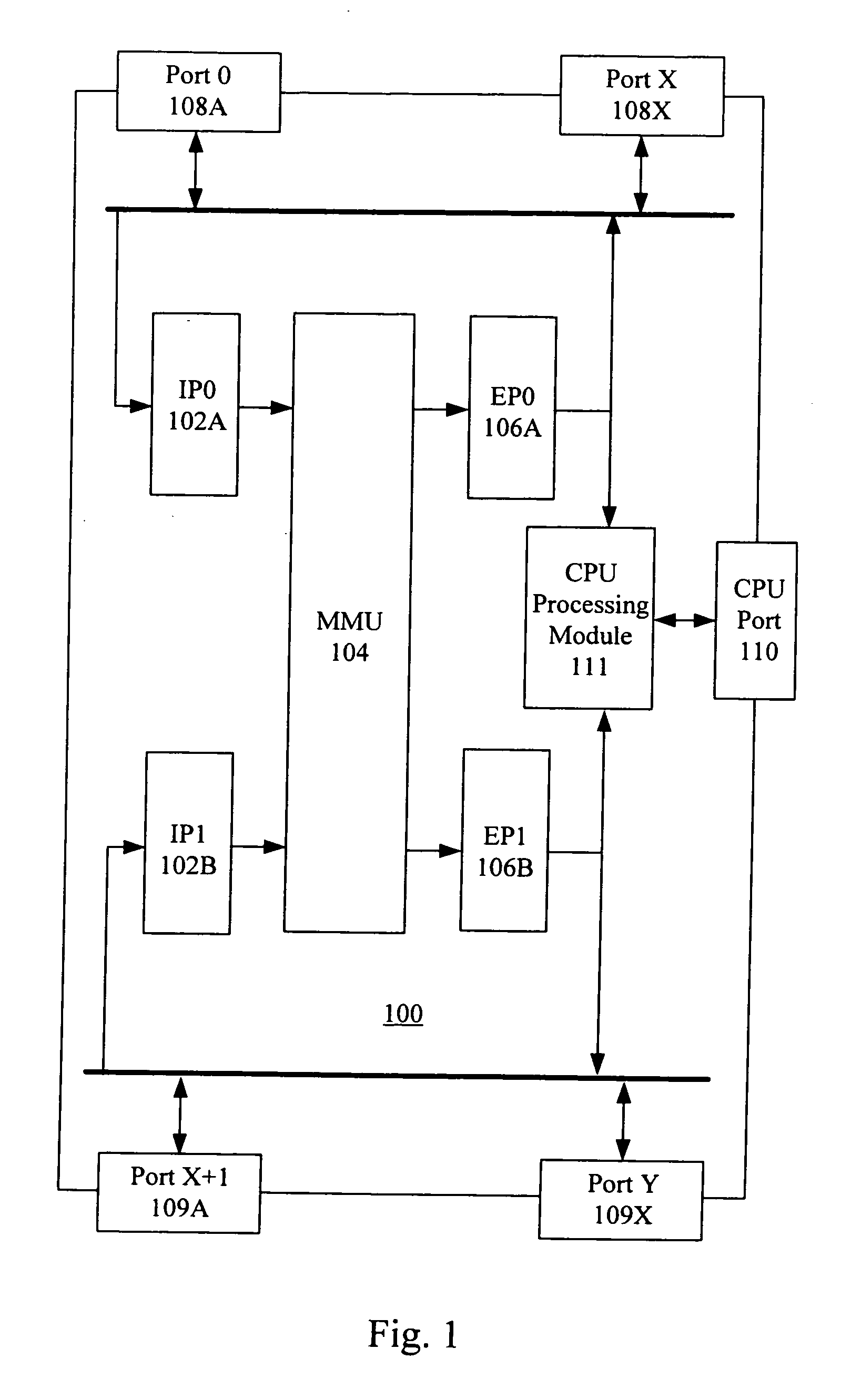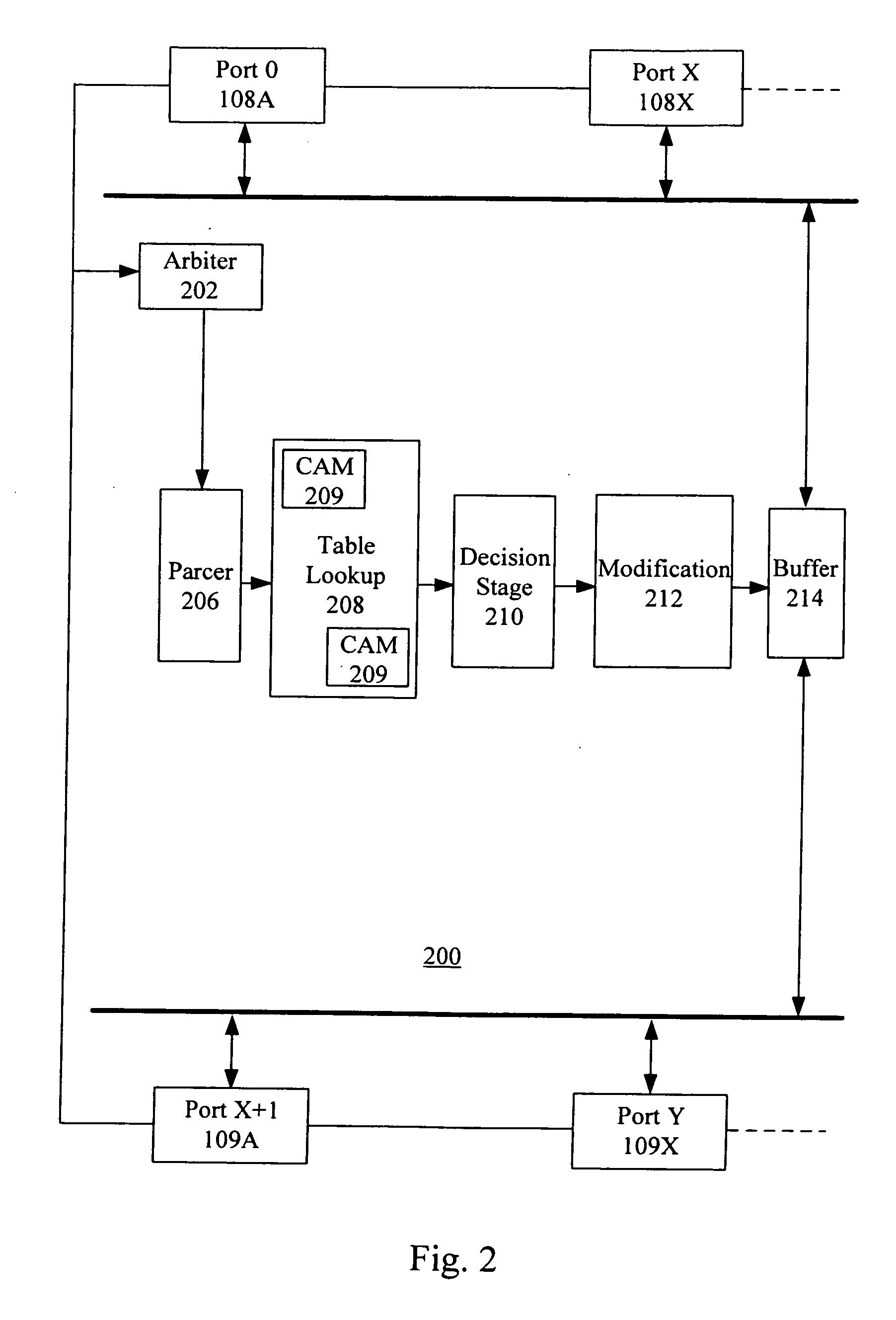Interleaved processing of dropped packets in a network device
a network device and drop packet technology, applied in the direction of electrical equipment, data switching networks, digital transmission, etc., can solve the problems of affecting line rate performance and not knowing error types
- Summary
- Abstract
- Description
- Claims
- Application Information
AI Technical Summary
Problems solved by technology
Method used
Image
Examples
Embodiment Construction
[0024] As datagrams, hereafter referred to as packets, are received in a network device, they are broken into units used by a buffer, for example 128 byte cells. Those units must be stored such that they can be retrieved in the same configuration as they are received. However, some error conditions, such as Cyclic Redundancy Check (CRC) and Maximum Transmission Unit (MTU) errors are not known until the last piece of the packet has been received (at the end of the packet, or EOP). When an error like this occurs, the buffer space used by the bad packet must be returned to the unused buffer pool. In a system that is designed to write two cells and read two cells in every clock cycle, the free cell list is a separate mechanism than the cell link memory, where that memory links used cells into packets. Therefore, each cell must be returned to the free cell pool one at a time. Meanwhile, for actual data being transmitted, cells must also be returned to the free pool. This would affect lin...
PUM
 Login to View More
Login to View More Abstract
Description
Claims
Application Information
 Login to View More
Login to View More - R&D
- Intellectual Property
- Life Sciences
- Materials
- Tech Scout
- Unparalleled Data Quality
- Higher Quality Content
- 60% Fewer Hallucinations
Browse by: Latest US Patents, China's latest patents, Technical Efficacy Thesaurus, Application Domain, Technology Topic, Popular Technical Reports.
© 2025 PatSnap. All rights reserved.Legal|Privacy policy|Modern Slavery Act Transparency Statement|Sitemap|About US| Contact US: help@patsnap.com



